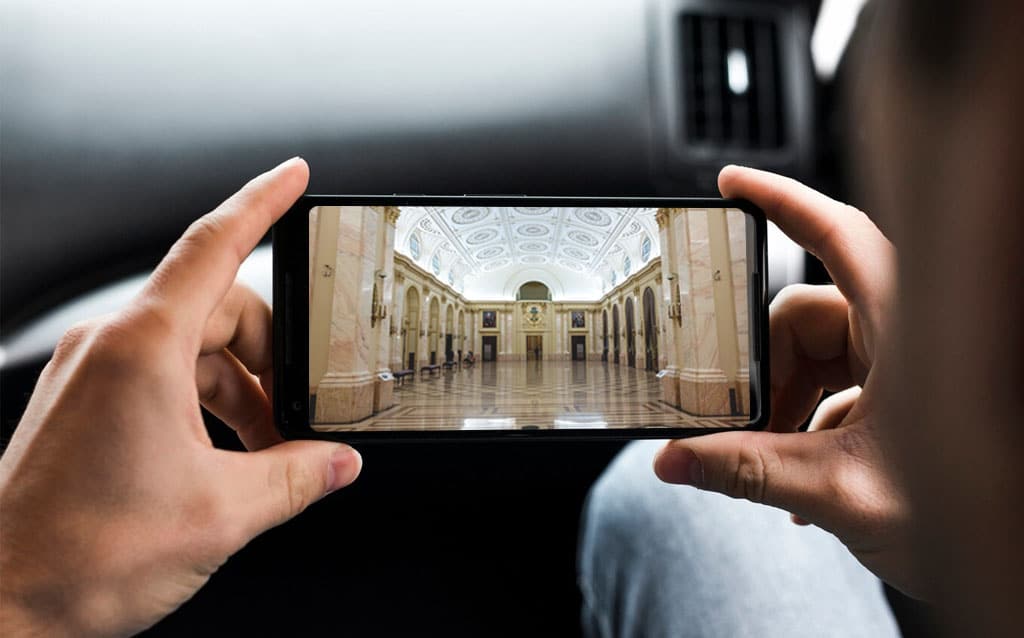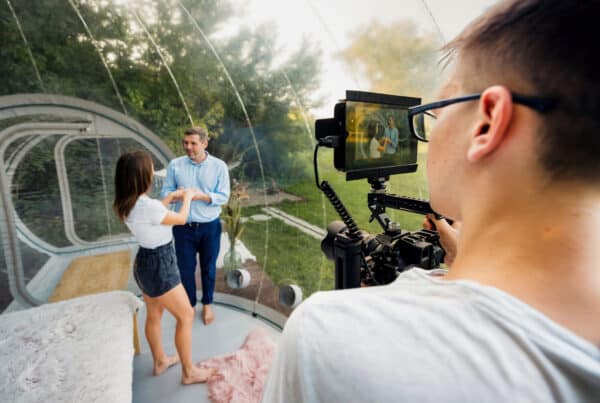Virtual reality (VR) and 360-degree video are immersive technologies that have gained significant attention in recent years. While they may seem similar, they offer distinct experiences and applications. Understanding these differences is essential for leveraging these technologies in entertainment, education, marketing, or other areas. In this article, we will explore the unique features, applications, and advantages of virtual reality and 360 video to help you determine which is best suited for your needs.
What is Virtual Reality?

Virtual reality (VR) is a computer-generated environment that simulates a realistic experience, allowing users to interact with and manipulate the virtual world. VR environments can be entirely artificial or based on real-world locations that have been recreated digitally. Users typically wear a headset equipped with sensors and display screens, such as the Oculus Rift, HTC Vive, or PlayStation VR, to experience VR.
Virtual reality offers an immersive environment that responds to user input, allowing interaction with the virtual world in real time. Users can manipulate objects and elements using controllers or hand-tracking devices, creating a sense of presence where they feel physically present in the virtual world. The experience is three-dimensional, enabling users to explore depth, height, and width within the environment.
Applications of Virtual Reality
VR is widely used in gaming, offering players immersive experiences in the virtual world. It is also used in training and simulation across various industries, such as healthcare, aviation, and the military, for creating controlled and realistic environments. In education, VR facilitates interactive learning experiences, enabling students to explore historical sites and scientific phenomena. Additionally, VR is used in healthcare for pain management, therapy, and surgical training, and in real estate to provide virtual property tours.
What is 360 Video?

360-degree video captures a spherical view of a real-world environment, allowing viewers to look in any direction, providing a more comprehensive perspective. Unlike traditional video, which captures a limited field of view, 360 video offers a complete, immersive experience. Viewers can explore the video by dragging the screen on a computer or using a VR headset.
360 video captures a spherical view of the environment, providing an authentic representation of real-world scenes. Unlike VR, it is generally non-interactive, as viewers cannot manipulate or interact with the environment beyond changing their perspective. However, 360 videos are easily accessible on various devices, including smartphones, tablets, and VR headsets.
Applications of 360 Video
360 video is used in tourism and travel, providing virtual tours of destinations, allowing viewers to explore landmarks and natural wonders. Brands use 360 video for engaging and immersive marketing campaigns. In journalism and documentaries, 360 video provides immersive coverage of events, offering unique perspectives. It is also used for live events and concerts, allowing viewers to experience them from home. In education, 360 videos create virtual field trips and educational experiences, enabling students to explore different environments and cultures.
Comparing Virtual Reality and 360 Video

While both VR and 360 video offer immersive experiences, they differ in several key aspects.
Level of Immersion
Virtual reality provides a highly immersive experience by creating a fully interactive and responsive virtual environment. Users feel present in the virtual world and can interact with objects and elements. In contrast, 360 video offers a partial immersive experience, providing a spherical view of real-world environments. Viewers can look around but cannot interact with the environment.
Interactivity
Virtual reality is highly interactive, allowing users to engage with and manipulate the virtual environment using controllers or hand-tracking devices. VR experiences include gaming, simulations, and interactive storytelling. On the other hand, 360 video tours offers limited interactivity, with viewers able to change their perspective but not directly interact with the environment.
Content Creation
Creating virtual reality involves developing computer-generated environments and simulations, which can be complex and time-consuming. It requires specialized skills in 3D modeling, animation, and programming. In contrast, 360 video involves capturing real-world scenes using specialized cameras. While post-production editing is still required, the process is generally less complex than creating VR environments.
Equipment and Accessibility
Virtual reality requires a VR headset and often additional hardware, such as controllers or sensors. VR experiences may have higher equipment costs and accessibility challenges. In contrast, 360 video can be viewed on various devices, including smartphones, tablets, and VR headsets, making it more accessible to a wider audience.
Applications and Use Cases
Virtual reality is ideal for applications requiring high levels of interactivity and immersion, such as gaming, training, and simulations. It is well-suited for creating custom experiences and environments. On the other hand, 360 video is suitable for applications benefiting from immersive storytelling and real-world representation, such as living tourism, marketing, and journalism. It is effective for providing virtual tours and capturing live events.
Production and Cost
Virtual reality can be more expensive to produce due to the complexity of creating interactive environments and the need for specialized skills and software. In contrast, 360 video is generally less expensive to produce, as it involves capturing real-world scenes rather than creating digital environments. However, production costs can vary based on the level of post-production editing and equipment used.
Advantages and Limitations

Both VR and 360 video have their own set of advantages and limitations. Understanding these can help determine which technology is better suited for specific applications.
Advantages of Virtual Reality
Virtual reality offers high interactivity, allowing users to engage with and manipulate the virtual environment. It provides the ability to create custom environments and experiences tailored to specific needs and objectives. VR is ideal for training and simulation applications, offering a safe and controlled environment for practice and experimentation.
Limitations of Virtual Reality
Virtual reality requires specialized hardware, such as VR headsets and controllers, which can be costly and limit accessibility. The content creation process is complex, requiring specialized skills and software. Additionally, VR experiences may be less accessible to a wider audience due to equipment requirements and cost barriers.
Advantages of 360 Video
360 video is easily accessible on various devices, making it more accessible to a wider audience without the need for specialized equipment. It provides an authentic representation of real-world environments, making it ideal for virtual tours and immersive storytelling. Additionally, 360 video is generally less expensive to produce compared to VR, as it involves capturing real-world scenes rather than creating digital environments.
Limitations of 360 Video
360 video offers limited interactivity, as viewers can only change their perspective without direct interaction with the environment. It provides a less immersive experience compared to VR, as it lacks the ability to create fully interactive environments. Additionally, once recorded, 360 video content is fixed and cannot be altered or customized like VR environments.
Conclusion: Choosing the Right Technology
The choice between virtual reality and 360 video depends on your specific goals, budget, and target audience. Both technologies offer unique advantages and can be used effectively in various applications.
If you prioritize high levels of interactivity and immersion, need to create custom environments, or require a controlled setting for training and simulations, virtual reality is the ideal choice. It is well-suited for gaming, education, and industries where interaction and engagement are key.
On the other hand, if you seek a more accessible and cost-effective solution for immersive storytelling and real-world representation, 360 video is the better option. It is suitable for tourism, marketing, journalism, and events where providing a comprehensive view of real-world scenes is essential.
By carefully evaluating the unique features and limitations of virtual reality and 360 video, you can make an informed decision that aligns with your objectives and maximizes the impact of your immersive content.
Understand the key differences between Virtual Reality (VR) and 360° video. While VR offers full interactivity in a digital world, 360° video provides immersive panoramic views. Both transform digital experiences in unique ways. Contact us today to explore how these technologies can enhance your projects!




